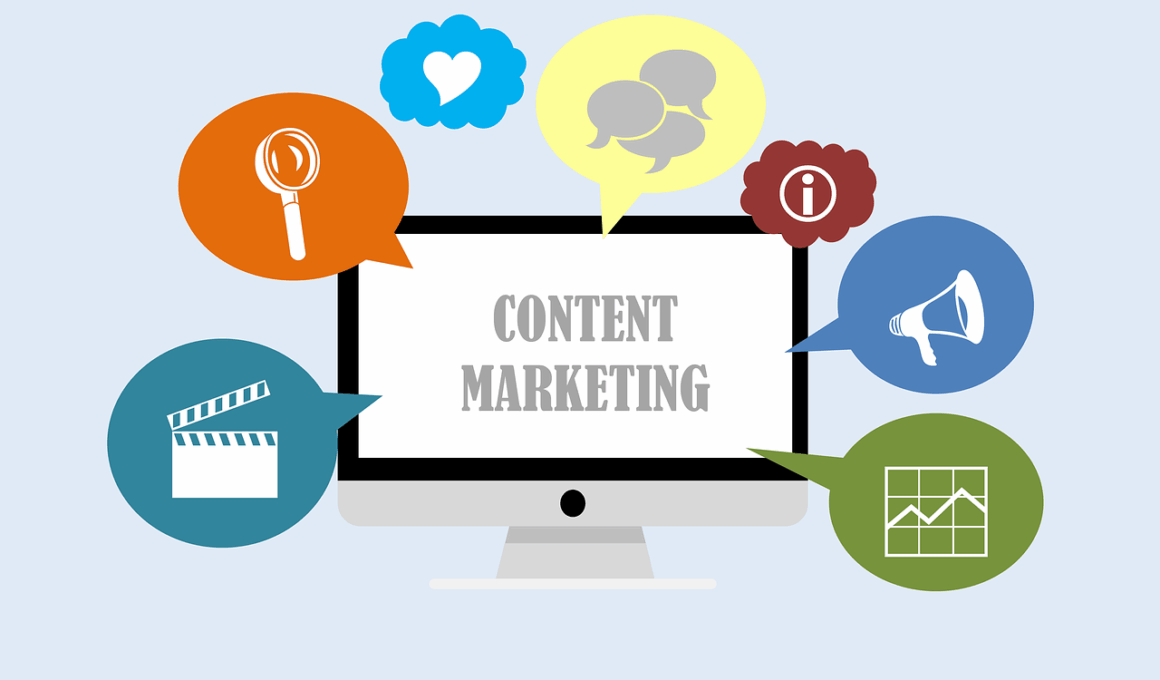Case Studies: Successful Campaigns Combining Content and Paid Search
In the dynamic world of digital marketing, blending content strategies with paid search campaigns can yield exceptional results. One notable example of this is the Expedia campaign, where unique content was designed to coincide with targeted paid ads. By developing engaging travel guides and coupled with PPC ads focusing on related keywords, they managed to entice travelers significantly. This integrated approach highlighted the strength of relevant content paired with strategic ad placements. It ensured that potential customers found value before making travel decisions, converting leads to sales. By focusing on user intent, they were able to generate a significant increase in ROI, showcasing how effective this synergy can be when executed properly. Furthermore, by analyzing the respective metrics and utilizing A/B testing, they gained insights into what worked best. The combined efforts led to creating a seamless experience for users, figuring out how content quality affects the efficiency of paid strategies. Consequently, this case underscores the necessity for businesses to explore integrations of content and paid search for optimal marketing success. Each aspect informs the other, improving overall campaign performance and brand visibility in online spaces.
Similarly, HubSpot’s campaign exhibits a powerful combination of content marketing with paid search strategies. By creating resources like e-books and guides, which are optimized for SEO, they use these materials as the anchor for their PPC ads. The compelling headlines bait users into clicking, while the high-quality content fosters trust and establishes authority. One standout initiative was their ‘State of Inbound’ report, which drove traffic from both organic search and PPC efforts. Users drawn from ads found themselves readily opting into their email list. Once on board, these users engaged with more in-depth content, nurturing leads down the sales funnel. The success of this duality not only bridged brand awareness but also enhanced lead generation, converting prospects directly into customers. This approach, supported by data analytics, enables marketers to see which type of content performs best across different channels. Continuous iteration ensures that both content and ads are fine-tuned according to user interaction. Consequently, this effective interplay of valuable content with targeted advertisement lays a robust groundwork for achieving tangible marketing outcomes.
Another powerful case study can be observed through the work of Sephora, which ingeniously blended their content strategy with paid search initiatives to enhance customer engagement. The iconic beauty retailer leveraged their blog as the cornerstone of their digital marketing strategy. Through creating rich, informative content on beauty trends, product usages, and tips, they addressed customer interests and queries effectively. Complementing this with PPC ads targeting specific beauty-related search terms brought remarkable results. By linking ads to blog content, consumers found authoritative insights that encouraged them to shop more frequently. Such a strategy not only drove traffic to their website but also facilitated higher conversion rates. Analyzing customer behavior revealed that users engaging with branded content were more likely to convert via paid searches influenced by the information gathered. The approach highlights an effective way to capitalize on synergy between valuable brand content and persuasive ads. Additionally, measuring the correlation between content engagement and paid conversions has helped optimize ad spend. Sephora’s methodology exemplifies a best practice approach in integrating content and paid search for a holistic marketing experience.
A notable implementation of this dual strategy can be seen in the Coca-Cola campaign, where they aligned their paid search efforts with their broader content marketing strategy. By crafting compelling content around holidays and events, they utilized paid advertising to target specific demographics searching for related holiday products. The advertisements were linked to storytelling content that evoked a sense of nostalgia and emotional connection, striking a chord with their audience. This emotional leverage through content enabled users to find deeper value in click-through opportunities from paid ads. Moreover, by leveraging social media platforms to promote both their ads and content, Coca-Cola maximized reach and engagement levels. This strategic alignment allowed Coca-Cola to create a much more relatable brand image, resulting in increased customer loyalty over time. The success metrics reflected a significant uplift in engagement during campaigns, showcasing how effective storytelling can complement paid search. This blend results in an enriched user experience that not only drives sales but also cultivates long-term relationships with consumers, illustrating the importance of thoughtful content production alongside great ad spending.
In the realm of travel, Booking.com has executed a remarkable synergy between its content platforms and paid search ads. Their adept use of user-generated content in reviews and travel experiences provided the foundation for an interactive content strategy. Ad placements were then dynamically linked to specific queries, utilizing reviews to entice users to click. By showcasing real traveler insights picked up through content, they not only built credibility but also transformed ads into more desirable offerings. The brilliance of this approach lies in its ability to draw in a segment of users who prioritize social proof and authentic experiences. Consequently, traffic driven through paid search campaigns saw higher engagement levels, leading to exceptional conversion rates. Additionally, analyzing user behavior and click-through rates provided insights that allowed further fine-tuning of campaigns. As a result, this successful integration emphasizes the power of content in guiding paid search strategies. Booking.com exemplifies an approach where both forms of marketing amplify each other to foster trust and drive business growth, ensuring maximum effectiveness from their investments.
Another striking example of the combination of content and paid search strategies can be seen with Adobe. Through carefully curated content about creative cloud services and tools, Adobe captured a broad audience of designers and marketers. The strategy involved creating comprehensive guides that detailed product benefits and use cases. These resources were then used as a basis for targeted pay-per-click ads, capturing search intent systematically. Through investing in relevant keywords that align with their tailored content, they achieved great success. Prospects who clicked on ads were immediately met with quality content that encouraged further exploration, delighting users at various sales stages. Penguin Random House’s affiliated publishing efforts followed a similar model, effectively transforming content into engaging campaigns. By creating a community around book launches and author insights, they crafted stories woven seamlessly into related ads. This cohesive approach enhanced engagement, showcasing how properly managed content alongside ads fosters a more substantial interaction. By leveraging insights from previous campaigns, brands can refine both content and ad strategies to ensure alignment, reflecting lessons learned across all promotional endeavors.
Moreover, the case of LinkedIn offers a prime demonstration of how effective content can enhance paid search results. By maintaining a daily blog with insights on industry trends, career tips, and user experiences, they cultivate a wealth of valuable content. This content informs their paid search campaigns, allowing targeted advertising that resonates with users searching for professional development growth. Notably, their integration of sponsored content and InMail messages augmented this synergy. This approach builds a comprehensive experience that improves engagement rates and facilitates conversions. Utilizing data analytics, they monitor which content drives the most interaction alongside paid placements, refining strategies in real-time. Through continuous improvements based on user feedback, LinkedIn maximizes the returns from their campaigns. This strategy showcases the importance of ensuring that content represents the brand’s values and meets users’ needs, guiding them seamlessly into converting actions. The successful integration of content and paid advertising not only boosts visibility but also commits to fostering a connection with the target audiences, reinforcing the need for collaboration between these two powerful marketing realms.
Conclusion
In conclusion, it is evident that the fusion of content and paid search campaigns can lead to elevated marketing success. Numerous case studies affirm that strategic combinations can drive consumer engagement and convert prospects effectively. Learning from brands like Expedia, HubSpot, and Coca-Cola illustrates the various ways integrations can be achieved. They all showcase that aligning valuable content with targeted paid search initiatives leads to improved visibility and customer loyalty. Evaluating user engagement data allows brands to refine their strategies continually. Each campaign affirms the adage of providing value to consumers, reinforcing their decision-making processes. As marketers face an increasingly competitive landscape, such approaches become critical tools to stay ahead. Moreover, the need for brands to convey authentic and relevant messages through combined efforts is paramount. Consequently, effective integration creates a well-rounded strategy that resonates with users, establishing long-term connections and ensuring profitability. Future campaigns should emphasize this partnership, unlocking the potential for maximized returns on investment. Embracing such innovative strategies may be the key to thriving successes in the ever-evolving world of digital marketing.


